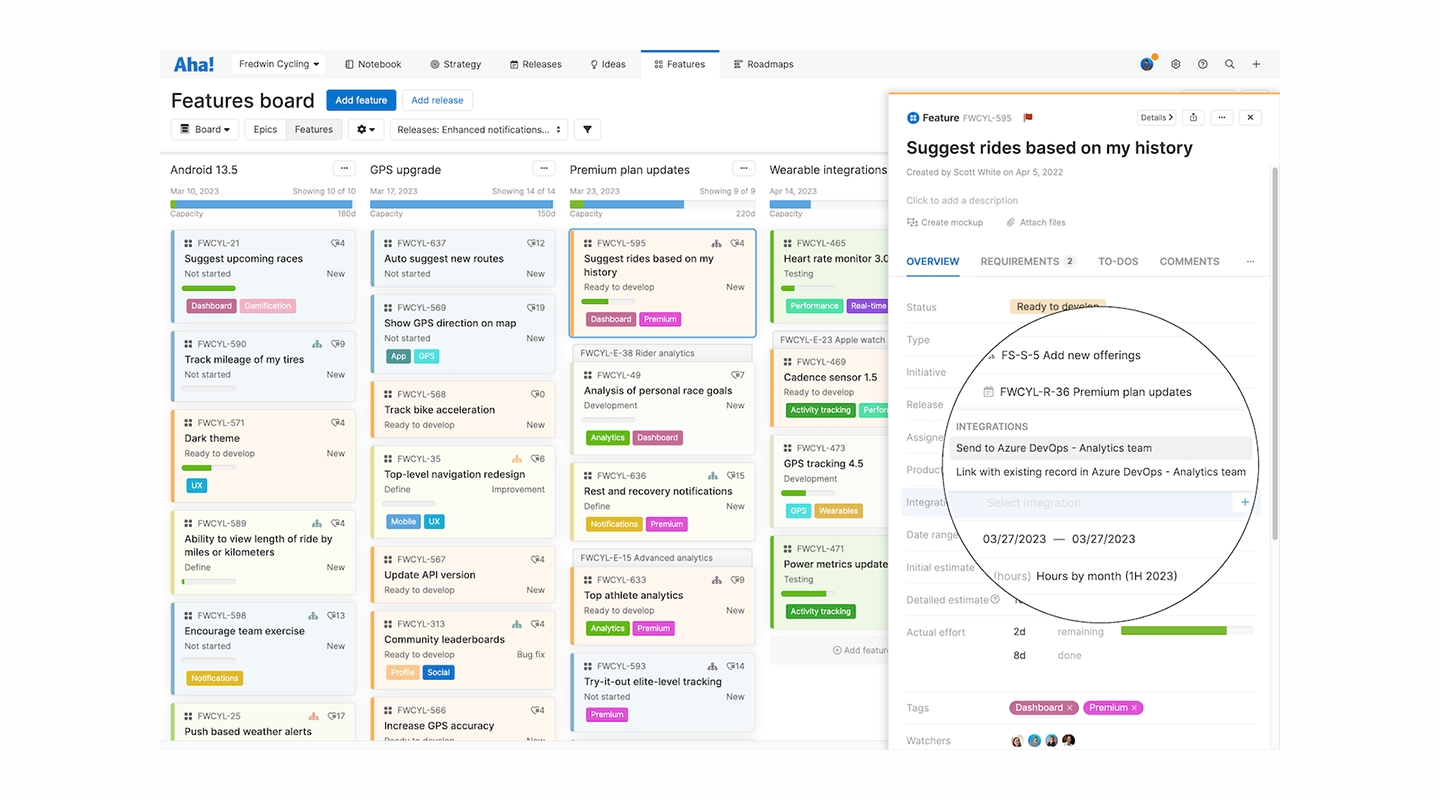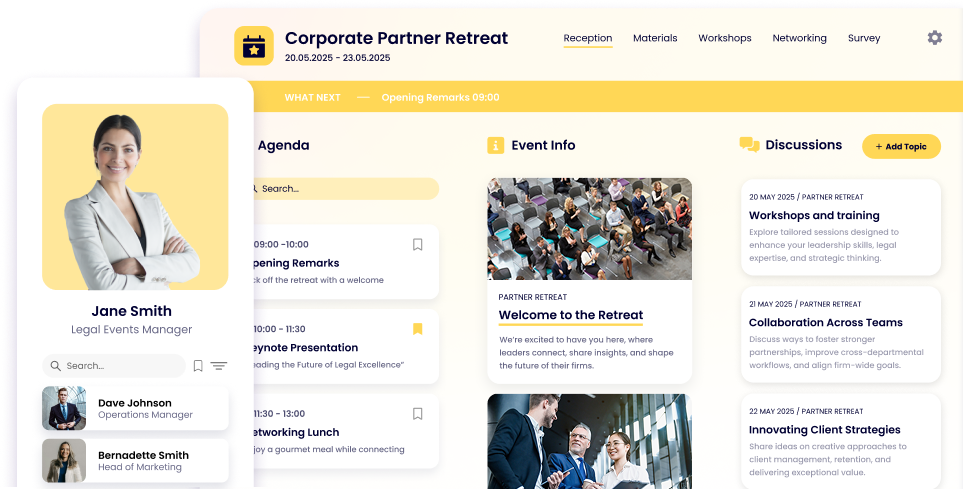20 Best Innovation Management Tools & Software for 2024

Niamh Conneely | Marketing Executive

Every company in the world claims it wants to foster a culture of innovation. But that’s easier said than done. So, enterprises are constantly on the lookout for the best tools and solutions that can transform ideas into impactful realities.
And it’s true that the right platform can be the catalyst that propels an organization from concept to execution, blending creativity with strategy to unleash groundbreaking outcomes.
This is where innovation management software comes into play, offering a suite of tools designed to streamline the ideation process, enhance collaborative efforts, and drive the successful implementation of innovative initiatives. Identifying the best innovation management software is crucial for businesses aiming to stay ahead in a competitive landscape.
Let’s discover what the very best tools in the field are. That way, your company can decide the right innovation management software for yourself.
10 Best Innovation Management Software & Tools Shortlist
Exploring the realm of innovation management, there are a head-spinning number of software options. There’s no reason to add to the confusion, so here is a shortlist of idea management software:
- Fliplet
- IdeaScale
- Brightidea
- Planview Spigit
- Viima
- Innovation Cloud
- Qmarkets
- Sideways 6
- MindMeister
- HYPE Innovation
Each of these platforms offers unique strengths, ranging from comprehensive idea management capabilities to deep analytics and reporting tools. They’re designed to support various stages of the innovation lifecycle, from idea generation and capture to evaluation, selection, and implementation.
Below, we’ll go in-depth to discover why you might choose some corporate innovation tools over others.
Why Trust Our Innovation Software Reviews

To fully scope out the field, our team did a deep-dive investigation into innovation management tools and software.
The results are what you see here — grounded in a comprehensive evaluation process and an exhaustive search for what teams around the world were doing right (and not-so-right).
We examine each software solution’s performance, reliability, and user feedback to ensure that our recommendations are trustworthy, relevant, and, most importantly, so you can make your own decision.
The following information comes from seasoned experts with firsthand experience in deploying and managing these tools across a range of industries.
The Best Innovation Management Tools & Software Comparison Chart
| Software | Key Features | Advantages | Disadvantages | Pricing |
|---|---|---|---|---|
| Fliplet | Custom app development, integration capabilities | Highly customizable, no coding required | May require time to learn features | Free option, with paid versions starting at $9.90 per month per app |
| IdeaScale | Idea submission, voting, and ranking | Scalable, user-friendly | Limited customization in lower tiers | Contact for pricing |
| Brightidea | Pipeline management, mobile app | Comprehensive set of tools, flexible | Steep learning curve for new users | Free demo, contact for pricing |
| Planview Spigit | Idea challenges, predictive analytics | Advanced analytics, large community | Can be complex to fully utilize | Contact for pricing |
| Viima | Visual idea boards, gamification | Free for up to 50 users, intuitive UI | More suitable for SMEs | Free version with premium plans starting at $39 per month |
| Innovation Cloud | End-to-end process management | User-friendly, great for collaboration | Might lack some advanced analytics | Free version with premium plans starting at $30 per month |
| Qmarkets | Customizable workflows, robust security | Highly customizable, very secure | Higher cost for small teams | Contact for pricing |
| Sideways 6 | Integration with Microsoft Teams | Enhances existing platforms, straightforward | Reliant on Microsoft ecosystem | Free version with premium plans starting at $30 per year |
| MindMeister | Mind mapping, real-time collaboration | Excellent for brainstorming, integrates with MeisterTask | Primarily a mind-mapping tool | Free version with premium plans starting at $6.50 per user per month |
| HYPE Innovation | Full lifecycle management, innovation campaigns | Comprehensive, strong community support | Initial learning curve for some features | Contact for pricing |
Criteria for Selecting an Innovation Management Platform
Factors considered in evaluating innovation management solutions

Key Features
Idea Management Software and Collaboration Tools
Look for software that provides robust ideation capabilities, such as brainstorming sessions, idea submission, commenting, and voting features. Collaboration tools should enable seamless communication and foster teamwork among employees.
Workflow and Process Automation
Efficient innovation management software should offer workflow automation features to streamline the entire innovation lifecycle, including idea evaluation, project management, and implementation tracking.
Customization
Every organization has its unique innovation process and workflow. The ability to customize the software ensures that it can adapt to these unique requirements rather than forcing the organization to adjust its processes to fit the software. This includes customizing stages of idea development, workflows, user roles, and the overall look and feel of the software to mirror the organization’s branding.
Integration
The software’s capacity to integrate with existing tools and systems (such as email, project management tools, CRM, ERP systems) is crucial for streamlining workflows and maximizing efficiency. Integration eliminates the need to switch between different applications, facilitating a smoother flow of information and improving user adoption rates.
Customer Support
The level and quality of customer support provided by the software vendor are pivotal. This includes the availability of a knowledgeable support team that can offer prompt and effective help when issues arise, as well as access to comprehensive resources such as tutorials, user guides, and community forums. Good support can significantly impact the software’s success and user satisfaction within an organization.
Reporting and Analytics
The software should provide comprehensive reporting and analytics capabilities to track the progress of innovation initiatives, measure key performance indicators (KPIs), and gain valuable insights for informed decision-making.
Pricing
Cost Structure
Evaluate the pricing models offered by different software providers. Common pricing structures include one-time licensing fees, subscription-based models, or tiered pricing based on the number of users or features.
Scalability
Consider how the pricing scales with your organization’s growth. Will there be additional costs as you expand or add more users? Ensure the pricing aligns with your long-term business objectives.
Customer Reviews
Reputation and Reliability
Research and review customer testimonials and case studies to gauge the software’s reputation in the market. Look for feedback on its reliability, performance, and customer support.
User Experience
Assess the overall user experience as described by existing customers. Are users satisfied with the software’s ease of use, intuitiveness, and accessibility?
Implementation and Support
Consider customer reviews that highlight the software’s ease of implementation and the level of support provided by the vendor. Look for indications of prompt assistance, training resources, and ongoing technical support.
Design for Enterprise Audience
Scalability and Security
Ensure that the software is designed to handle the scale and security requirements of an enterprise. Look for features like user roles and permissions, data encryption, and compliance with relevant data protection regulations.
User-Friendly Interface
Evaluate the software’s user interface for ease of navigation, intuitiveness, and efficient workflows. A user-friendly design can minimize training time and facilitate adoption across teams.
Mobile Accessibility
Consider whether the software offers mobile accessibility, allowing users to access and contribute to innovation initiatives on the go.
Security
With innovation often involving sensitive information and intellectual property, the security measures implemented by the software are paramount. This includes data encryption, secure access controls, and compliance with international data protection regulations. Ensuring that the software has robust security protocols in place protects the organization’s valuable assets and maintains stakeholder trust.
Factors considered in evaluating innovation management software
When comparing innovation management software, consider the following criteria:
- Ease of use: How user-friendly is the software?
- Customization: Can the software be tailored to fit the unique processes of an organization?
- Integration: Does it integrate with other tools and systems currently in use?
- Scalability: Can the software grow with the organization?
- Support: What level of customer support is provided?
- Pricing: Is the cost of the software justified by its features and benefits?
- Security: How does the software protect sensitive information?
The 20 Best Innovation Management Software: Reviews & Tool Overview
1 Fliplet Innovation Management Solution

Analysis
If you are looking for an innovation management platform then Fliplet should be your research starting point. Fliplet offers an innovation management platform that allows to manage your entire innovation cycle into one single web and mobile app. From idea generation to idea voting and execution Fliplet has you covered. The best thing about fliplet is that it offer a free version which allows you to start your innovation platform even without paying a single dollar. Ready to start your innovation journey?
Sign up for Free and start using Fliplet
Pricing
Pricing starts from $9.99 but it depends a lot on your users and needs so make sure to contact a Fliplet expert.
Reviews
Customer reviews for Fliplet Innovation Management Solution are generally positive, highlighting its reliability, performance, and excellent customer support.
Enterprise Readiness
Fliplet is designed to meet the scalability and security requirements of enterprises. It offers customization options, seamless integration capabilities, and a user-friendly interface, making it well-suited for enterprise use.
2 Miro

Analysis
Miro is a collaborative online whiteboard platform that allows teams to brainstorm, organize ideas, and visualize workflows. While it offers features suitable for ideation and collaboration, additional customization and reporting capabilities specific to innovation management may be required.
Pricing
Miro offers different pricing plans based on team size and features required. For detailed pricing information, it is advisable to visit Miro’s website or contact their sales team.
Reviews
Miro has generally positive reviews, with customers appreciating its collaborative features and ease of use.
Enterprise Readiness
Miro can be considered for enterprise use, but it may require additional customization and integration options to cater to specific innovation management needs.
3 Planview IdeaPlace

Analysis
Planview IdeaPlace is innovation management software designed to capture and evaluate ideas. It offers features for idea submission, evaluation, and project tracking. However, additional customization options and advanced reporting features may be necessary to meet specific enterprise requirements and those are really hard to be integrated.
Pricing
Pricing details for Planview IdeaPlace are available upon request, and it is recommended to contact Planview directly for accurate pricing information.
Reviews
Reviews suggest that Planview IdeaPlace provides a user-friendly experience and offers valuable capabilities for idea management.
Enterprise Readiness
Planview IdeaPlace can be considered for enterprise use, but assessing its readiness would depend on customization needs and integration capabilities.
4 Aha! Roadmaps

Analysis
Aha! Roadmaps is primarily focused on product roadmapping and strategic planning, but it does offer features for idea management. While it provides robust roadmap creation capabilities, it may require additional customization and ideation-focused features to meet specific innovation management needs.
Pricing
Aha! Roadmaps offers pricing on a per-user basis, with different plans depending on the features required. For detailed pricing information, it is advisable to visit Aha! Roadmaps’ website or contact their sales team.
Reviews
Reviews highlight Aha! Roadmaps’ strong roadmap creation capabilities and positive user experiences.
Enterprise Readiness
Aha! Roadmaps can be considered for enterprise use, but customization for innovation management and integration capabilities may need to be assessed based on specific requirements.
5 MindMeister

Analysis
MindMeister is a collaborative mind mapping tool that allows teams to visually capture and connect thoughts and concepts. While it offers a user-friendly interface and positive reviews, it primarily focuses on mind mapping rather than comprehensive innovation management features.
Pricing
MindMeister offers different plans, including individual, team, and enterprise options, with varying pricing tiers. For detailed pricing information, it is recommended to visit MindMeister’s website.
Reviews
MindMeister receives generally positive reviews, with customers appreciating its ease of use and collaborative features for brainstorming and organizing ideas.
Enterprise Readiness
MindMeister may be suitable for smaller enterprises or teams focusing primarily on mind mapping and ideation. However, for comprehensive innovation management needs, additional customization, integration capabilities, and advanced reporting features may need to be considered.
6 Ideanote

Analysis
Ideanote is an innovation management platform that focuses on capturing, evaluating, and developing ideas. It offers features for idea submission, evaluation, and feedback. Reviews suggest that Ideanote provides a straightforward and intuitive user experience.
Pricing
Ideanote offers custom plans based on organizational requirements. For detailed pricing information, it is advisable to contact Ideanote directly.
Reviews
Ideanote receives positive reviews, with customers highlighting its ease of use and effectiveness in managing the idea generation process.
Enterprise Readiness
Ideanote offers a user-friendly interface and customization options suitable for enterprise use. However, the readiness for enterprise implementation would depend on specific customization needs, integration capabilities, and scalability requirements.
7 Innovation Cloud

Analysis
Innovation Cloud is an innovation management software that provides a range of features, including idea management, workflow automation, and collaboration tools. It offers customization options and integrations with other tools. Reviews highlight its ease of use and comprehensive functionality.
Pricing
Innovation Cloud offers different plans tailored to organizational needs. For detailed pricing information, it is advisable to visit Innovation Cloud’s website or contact their sales team.
Reviews
Innovation Cloud generally receives positive reviews, with customers appreciating its user-friendly interface and effectiveness in managing innovation processes.
Enterprise Readiness
Innovation Cloud offers a range of features suitable for enterprise innovation management. Its customization options and integration capabilities contribute to its readiness for enterprise implementation. However, assessing enterprise readiness should consider specific customization requirements, scalability needs, and integration capabilities.
8 Viima

Analysis
Viima is an idea management software focused on collecting, evaluating, and developing ideas. It provides features for idea submission, evaluation, and collaboration. Reviews suggest that Viima offers a user-friendly and customizable platform.
Pricing
Viima offers different plans based on organizational needs. For detailed pricing information, it is recommended to visit Viima’s website.
Reviews
Viima receives positive reviews, with customers highlighting its ease of use, flexibility, and effectiveness in managing the idea management process.
Enterprise Readiness
Viima offers customization options and user-friendly features suitable for enterprise use. Its readiness for enterprise implementation would depend on specific customization requirements, integration capabilities, and scalability needs.
9 Brightidea

Analysis
Brightidea is an innovation management software that offers a range of features to capture, evaluate, and implement ideas. It provides collaboration tools, workflow automation, and analytics capabilities. Additional research is recommended to assess its specific customization options and integration capabilities for enterprise needs.
Pricing
For detailed pricing information, it is advisable to contact Brightidea directly.
Reviews
Brightidea generally receives positive reviews, with customers appreciating its robust idea management features and user-friendly interface.
Enterprise Readiness
Brightidea can be considered for enterprise use, but evaluating its enterprise readiness would depend on specific customization requirements, integration capabilities, and scalability needs.
10 IdeaScale

Analysis
IdeaScale is an idea management platform that allows organizations to collect, evaluate, and implement ideas from employees, customers, and partners. It offers collaboration features, idea submission and evaluation tools, and reporting functionalities. Additional research is recommended to assess its specific customization options and integration capabilities for enterprise needs.
Pricing
IdeaScale offers different pricing plans based on organizational needs and the number of users. For detailed pricing information, it is recommended to contact IdeaScale directly.
Reviews
IdeaScale generally receives positive reviews, with customers appreciating its user-friendly interface and effectiveness in managing the idea management process.
Enterprise Readiness
IdeaScale can be considered for enterprise use, but assessing its enterprise readiness would depend on specific customization requirements, integration capabilities, and scalability needs.
In summary, each of the tools mentioned offers unique features and capabilities for innovation management. While Fliplet Innovation Management Solution provides a comprehensive set of features, positive reviews, flexible pricing, and enterprise readiness, it’s important to evaluate the specific requirements and priorities of your enterprise to determine the best fit for your organization’s innovation management needs.
Other Innovation Tools and Idea Management Software

Beyond the mainstream innovation management platforms, the market is rich with a variety of other tools and software designed to foster creativity, streamline idea collection, and enhance project execution.
These alternative solutions can play a crucial role in supporting an organization’s innovation strategy, offering specialized functionalities that cater to specific needs or complement existing systems.
- Ideation platforms: Platforms like Miro and Stormboard offer interactive, visual spaces for brainstorming and collaborative idea generation. They are excellent for remote teams, facilitating real-time participation and creativity.
- Innovative management systems: Solutions such as Trello and Asana may not be exclusively designed for innovation management but offer great flexibility and customization for managing innovation projects and workflows.
- Innovation software tools: Tools like TrendHunter and Idea Drop provide unique features for capturing emerging trends and crowd-sourcing ideas, enabling organizations to stay ahead of market shifts and consumer preferences.
- Corporate innovation software: Platforms such as Salesforce’s Innovation Cloud offer a suite of tools that integrate with CRM systems, enhancing customer-driven innovation and idea management within corporate settings.
- Product innovation platforms: Software like ProdPad and Roadmunk specialize in product management and roadmap planning, supporting product teams in aligning their innovation efforts with market needs and strategic objectives.
- Innovation portfolio management tools: Solutions such as Planisware and Sopheon focus on portfolio management, helping organizations prioritize and manage a diverse set of innovation projects to maximize ROI.
- Ideation management platforms: BrightIdea and Idea Spotlight offer comprehensive platforms for managing the entire ideation process, from idea submission to evaluation and implementation, equipped with robust analytics to track success.
- Enterprise idea management: For larger organizations, platforms like SAP’s Innovation Management offer enterprise-grade capabilities, including integration with internal systems, to manage innovation at scale.
These tools and software solutions provide various functionalities that cater to different aspects of the innovation process, from idea generation and selection to project management and implementation.
What is an innovation management tool?
Innovation Management Software is a game-changing tool that helps organizations capture, evaluate, and implement groundbreaking ideas and initiatives in a structured way.
In this article, we’ll delve into the significance of innovation management for enterprises and provide a comprehensive overview of the top-notch software solutions available in the market. Whether you’re looking to revolutionize your innovation processes, cultivate a culture of creativity, or foster collaboration among teams, these software solutions are designed to propel your organization towards unparalleled success.
Let’s jump right in and explore the cream of the crop when it comes to innovation management software.
The Importance of Enterprise Innovation Software
Innovation management plays a crucial role in the success and growth of enterprises. As we saw above revenue and EBITDA are significantly higher in organizations with a high Innovation Indicator. Implementing effective innovation management practices can bring numerous benefits, including:
Stimulating Creativity
Innovation management encourages a culture of creativity within the organization, fostering an environment where employees feel empowered to generate and share innovative ideas.
Enhanced Efficiency
By providing a structured framework for innovation, management software streamlines the entire innovation lifecycle, from idea generation to implementation. This efficiency ensures that valuable resources are utilized optimally, saving time and reducing waste.
Strategic Alignment
Innovation management enables enterprises to align their innovation efforts with strategic goals and objectives. This alignment ensures that innovative initiatives are directly tied to business objectives, maximizing their impact and contribution to the organization’s overall strategy.
Improved Collaboration
Innovation management software promotes cross-functional collaboration, enabling teams from different departments and locations to collaborate effectively on innovative projects. This collaboration facilitates the exchange of ideas, knowledge sharing, and diverse perspectives, leading to richer and more innovative outcomes.
Risk Mitigation
By implementing a structured innovation management process, enterprises can identify and evaluate potential risks associated with new ideas or initiatives. This proactive approach enables organizations to mitigate risks early on, reducing the chances of costly failures and maximizing the return on investment.
Continuous Improvement
Innovation management encourages a mindset of continuous improvement, allowing enterprises to constantly evolve and adapt to changing market dynamics. It enables organizations to stay ahead of competitors by consistently innovating and delivering improved products, services, and processes.
Customer-Centric Approach
Effective innovation management focuses on understanding customer needs and preferences. By actively involving customers in the innovation process, enterprises can develop solutions that are tailored to their target audience, leading to higher customer satisfaction and loyalty.
Competitive Advantage
Innovation management enables enterprises to gain a competitive edge by bringing unique and groundbreaking ideas to market. It helps organizations differentiate themselves, attract new customers, and retain existing ones, ultimately driving business growth and success.
But, don’t just take our word for it.
According to McKinsey Research:

The surprising stat is that although 84% of CEOs agree that Enterprise Innovation is important, only 6% of them are satisfied with their performance.
But what’s the difference between innovative and non-innovative organizations and how do innovative organizations succeed?
The answer is innovation management software.
Benefits of Innovation Platforms

Innovation platforms are crucial for enterprises seeking to navigate the complex landscape of modern business competition. They offer a suite of advantages that streamline and enhance the innovation process:
- Collaboration enhancement: Facilitates seamless interaction across teams and stakeholders, enriching the idea pool with diverse perspectives.
- Idea management: Streamlines the tracking and development of ideas from inception to implementation, ensuring valuable insights are captured and acted upon efficiently.
- Speed to market: Accelerates the introduction of new offerings, enabling rapid response to market shifts and customer demands.
- Strategic focus: Aligns innovation efforts with business objectives, optimizing resources for high-impact results.
- Risk reduction: Identifies potential pitfalls early, allowing for strategic adjustments and smarter risk-taking.
- Continuous learning: Promotes an iterative innovation cycle, leveraging past experiences to refine future strategies.
- Customer insight: Integrates customer feedback into the innovation process, ensuring products and services meet market needs.
- Competitive edge: By fostering a proactive and agile innovation environment, companies can achieve a distinct market advantage, driving growth and success.
Innovation platforms, more than anything else, commit your organization to a dynamic and forward-thinking culture. Using these tools gives your team the space and tech leverage to be innovating all the time.
Innovation Management Cycle
The innovation management cycle is a strategic framework that guides organizations through the process of generating, evaluating, implementing, and tracking innovative ideas. It serves as a roadmap for effectively managing the entire innovation journey, from the initial spark of creativity to the successful execution of transformative initiatives. By following this cycle, enterprises can navigate the complex landscape of innovation, harnessing the power of ideas to drive growth, competitive advantage, and business success. Let’s explore the different stages of the innovation management cycle, highlighting their significance and the key activities involved at each step. Understanding this cycle is crucial for organizations aspiring to foster a culture of innovation and leverage it as a strategic asset. Let’s delve into the intricacies of the innovation management cycle and discover how it paves the way for innovation excellence.
How can innovation management platforms help you through your cycle?
Ideation
Innovation management software provides dedicated platforms for capturing and organizing ideas. It offers features such as brainstorming tools, idea submission forms, and collaboration features, enabling teams to collaborate and generate a wide range of innovative ideas efficiently. The software facilitates the collection, categorization, and storage of ideas in a centralized database, making it easier for teams to access and build upon existing ideas.
Evaluation and Selection
Software solutions assist in the evaluation and selection process by providing tools to assess ideas against predefined criteria. This may include scoring models, SWOT analysis, and expert reviews. The software streamlines the evaluation process by providing a structured framework for assessing ideas, automating scoring calculations, and generating reports for easier comparison and decision-making. It helps identify the most promising ideas that align with strategic goals and have the highest potential for success.
Development and Planning
Innovation management software aids in the development and planning stage by offering project management tools. These tools allow teams to create detailed project plans, define tasks and milestones, allocate resources, and set timelines. The software enables collaboration among team members, streamlines communication, and provides visibility into project progress, ensuring that the development and planning process is efficient and transparent.
Implementation
Software solutions play a crucial role in the implementation stage by providing project management features. They offer task tracking, progress monitoring, and workflow automation tools to streamline the execution of initiatives. The software helps teams stay organized, assign responsibilities, and ensure that tasks are completed on time. It provides real-time visibility into project status, enabling teams to address bottlenecks and make timely adjustments as needed.
For more on task management read our blog
Tracking and Monitoring
Innovation management software facilitates tracking and monitoring by offering analytics and reporting capabilities. It provides customizable dashboards and visualizations to track key performance indicators (KPIs), measure progress, and assess the impact of implemented initiatives. The software aggregates data from various sources, allowing teams to gain insights into resource utilization, project milestones, and outcomes. This data-driven approach enables informed decision-making and helps identify areas for improvement.
Feedback and Iteration
Software solutions enable feedback and iteration by providing mechanisms to gather input from stakeholders, customers, and users. They offer features such as surveys, feedback loops, and user testing tools to collect feedback and suggestions. The software helps capture and analyze feedback, facilitating iterative improvements and refinements to implemented ideas. It allows teams to incorporate user insights, address pain points, and enhance the value proposition of the innovations.
Scaling and Integration
Innovation management software supports scaling and integration by providing tools to facilitate the integration of successful initiatives into core business processes or product/service offerings. It helps teams streamline the scaling process, manage dependencies, and ensure a smooth transition from pilot projects to broader implementation. The software assists in refining the innovations based on feedback, identifying scalability challenges, and supporting the necessary adjustments to meet the growing demands of the enterprise.
By leveraging innovation management software throughout the innovation management cycle, enterprises can streamline processes, enhance collaboration, gain insights, and drive continuous improvement. The software provides a cohesive platform that supports each stage of the cycle, enabling organizations to maximize the potential of their innovation initiatives.
#1 Innovation Management Example: How Fliplet Innovation Management Solution has helped in scaling enterprise innovation
We’d like to keep talking about Fliplet forever as we love our product. But instead we’d prefer to share a few stories with you that will inspire how you innovate. Watch how other Innovation Managers have used Fliplet and how they’ve structured their innovation programs to get board approval and increase innovative output.
Watch this inspirational session to hear from Adam Curphey, Senior Innovation Manager at Mayer Brown who discusses their journey with Fliplet, innovation and how AI fits into Innovation.
#2 Innovation Management Example: How to scale your technology using innovation management software
Also, here is another story on how Fliplet’s Innovation Management Solution and No-Code Platform has helped another organization scale their innovation process.
Trends in Innovation Management Tools & Software
As organizations strive to effectively navigate the innovation management cycle and optimize their innovation processes, they must also stay attuned to the evolving landscape of innovation management trends.
The integration of innovation management software has revolutionized the way enterprises approach innovation, streamlining workflows and driving collaboration. Building upon this foundation, it is crucial for organizations to be aware of the emerging trends in innovation management.
These trends reflect the dynamic nature of the business world and offer valuable insights into new approaches and strategies for fostering innovation.
In this section, we will explore some of the key trends in innovation management that are shaping the way organizations generate ideas, evaluate opportunities, and execute transformative initiatives. By embracing these trends, organizations can stay ahead of the curve and leverage innovation as a catalyst for success in an increasingly competitive and disruptive business environment.
Open Innovation
Open innovation is a growing trend where organizations collaborate with external partners, such as customers, suppliers, and even competitors, to jointly develop innovative solutions. This approach breaks down traditional boundaries and leverages the collective knowledge and resources of a larger network, fostering creativity and accelerating innovation.
Digital Transformation
With the increasing digitization of business processes, innovation management is also undergoing a digital transformation. Organizations are embracing digital tools and platforms to streamline innovation workflows, enhance collaboration, and leverage data analytics for better insights. This digital transformation enables faster, more efficient, and data-driven decision-making.
Agile and Iterative Approaches
Agile methodologies, popularized in software development, are being adopted in innovation management as well. Agile and iterative approaches allow organizations to quickly prototype, test, and refine ideas, minimizing risks and maximizing learning. These methods promote flexibility, adaptability, and continuous improvement, enabling organizations to respond rapidly to market changes.
Focus on Customer-Centric Innovation
Enterprises are placing a stronger emphasis on customer-centric innovation. Rather than relying solely on internal ideas, organizations are actively involving customers throughout the innovation process. Customer feedback, co-creation, and design thinking methodologies are being utilized to ensure that products and services meet customer needs and create a competitive advantage.
Embracing Artificial Intelligence (AI) and Machine Learning (ML)
AI and ML technologies are revolutionizing innovation management. These technologies can analyze vast amounts of data, identify patterns, and generate insights, aiding in idea generation, trend analysis, and predictive analytics. AI-powered chatbots and virtual assistants are also being used to enhance ideation sessions and provide real-time support to innovation teams.
Cultural Transformation
Enterprises are recognizing the importance of fostering a culture of innovation. This includes promoting risk-taking, encouraging collaboration and cross-functional teamwork, and creating an environment where diverse perspectives are valued. Organizations are investing in innovation training programs, workshops, and internal communication channels to nurture an innovation-focused mindset among employees.
Sustainability and Social Innovation
There is a growing emphasis on sustainability and social responsibility in innovation management. Organizations are integrating sustainability considerations into their innovation strategies, aiming to develop environmentally friendly products, reduce waste, and address social challenges. This trend aligns with the increasing consumer demand for ethical and sustainable solutions.
These are just a few of the emerging trends in innovation management. By staying informed and adapting to these trends, enterprises can position themselves at the forefront of innovation, driving growth and maintaining a competitive edge in the dynamic business landscape.
Popular Innovation Management Solution Features
Innovation management software is designed to facilitate the ideation and development process within organizations. It serves as a central platform where employees can collaborate on, evaluate, and develop innovative ideas into actionable projects. Here are some key features typically found in innovation management software:
- Idea Collection and Management: A repository for storing and categorizing ideas, often with the ability to submit ideas anonymously.
- Collaboration Tools: Functionalities that enable team members to comment on, discuss, and refine ideas together.
- Workflow and Process Management: Tools to manage the progression of ideas from conception to implementation, with stages and milestones.
- Innovation Pipeline: A visual representation of the status of various ideas and projects within the innovation process.
- Evaluation and Scoring Systems: Mechanisms to rate and prioritize ideas based on various criteria such as feasibility, potential impact, and required resources.
- Knowledge Management: A database for storing information related to innovation, including research, previous projects, and relevant external data.
- Reporting and Analytics: Features that allow the tracking of innovation efforts’ effectiveness and the measurement of outcomes against goals.
These features collectively support an organization’s innovation ecosystem, ensuring that the best ideas are captured, developed, and brought to fruition efficiently and effectively.
Costs & Pricing for Innovation Management Solutions

The investment in innovation management solutions varies widely depending on factors such as:
- feature set
- scalability
- vendor reputation
Typically, pricing models range from subscription-based (monthly or annually) to customized pricing based on the specific needs and size of the organization.
For small to medium enterprises, costs can start from a few hundred dollars per month, while larger organizations might see figures reaching into the thousands. It’s essential for businesses to consider not just the upfront and ongoing costs but also the potential return on investment (ROI) these tools can bring through enhanced innovation outcomes, faster time-to-market, and improved operational efficiencies.
Many vendors offer tiered pricing structures to accommodate the growth of your organization, with options for add-ons or premium features that provide additional value. Understanding the pricing model and what’s included is crucial for selecting a solution that aligns with your budget and innovation goals.
How to Create Your Own Innovation Management Software
Creating your own Innovation Management Software using Fliplet is a straightforward process that can help streamline your organization’s innovative processes and workflow. Here’s how you can do it:
- Create an Account: Sign up for a new account with Fliplet. This will be your starting point in creating a custom app without the need for extensive coding knowledge.
- Select the Fliplet Innovation Solution: Once registered, you can choose the ‘Innovation Management’ pre-built solution offered by Fliplet, which serves as a template for building your app.
- Design and Customize to Your Needs: Use Fliplet’s intuitive drag-and-drop interface to design your app. You can tailor the look and feel to match your company’s branding, as well as modify the layout to suit your specific requirements.
- Add Features That You’d Like: Integrate popular features that can enhance the functionality of your innovation management software. You might want to include:
- Chat: Implement a chat feature to allow real-time communication among team members for quick discussions and brainstorming sessions.
- Directory: Create a directory to store contact information, making it easy to find team members, experts, and innovators within your organization.
- Project Management: Add project management tools to track progress, assign tasks, set deadlines, and update the status of various innovation projects.
- Launch Your App on the Web: With Fliplet, you can launch your application as a web app to ensure it’s readily accessible to any team member with internet access, regardless of the device they use.
- Get Your First 25 Users for Free: Fliplet allows you to onboard your first 25 users at no cost, giving you the opportunity to test and refine your app with a core group of users before full deployment.
- Launch Your Mobile App: Once you’re satisfied with the web version, you can also launch your app for mobile devices. Fliplet facilitates the creation of apps for both iOS and Android platforms, helping you reach users who prefer mobile access.
By following these steps, you can have an operational, custom-tailored Innovation Management Software that resonates with your company’s innovation strategies and supports collaborative growth and development. Fliplet aims to make app development accessible, requiring minimal technical skill to get a functional and professional-looking app up and running.
When choosing an innovation management tool you should only settle for the best
In conclusion, innovation management software has become an indispensable tool for enterprises seeking to thrive in today’s fast-paced and competitive business environment. From ideation to implementation, these software solutions streamline the entire innovation management cycle, fostering creativity, collaboration, and data-driven decision-making.
By leveraging the power of innovation management software, organizations can capture and evaluate ideas effectively, optimize resource allocation, track progress, and drive continuous improvement. Furthermore, the trends in innovation management, such as open innovation, digital transformation, customer-centricity, and the integration of AI and ML, are reshaping the way enterprises approach innovation.
Embracing these trends and leveraging the capabilities of innovation management software can position organizations at the forefront of innovation, enabling them to deliver groundbreaking products, services, and solutions that meet customer needs, drive growth, and maintain a competitive advantage.
As enterprises navigate the evolving landscape, investing in and embracing innovation management software is not just an option but a necessity to drive success and fuel their journey towards a more innovative and prosperous future.
Innovation Management Tools & Software: Frequently Asked Questions
What is innovation management software?
Innovation management software is a type of enterprise software that helps organizations systematize the process of managing innovations. It enables the capturing, development, and implementation of new ideas, facilitating collaboration and project management to drive business growth and improve competitiveness.
Which software is recommended for doing innovative management?
Several reputable software options are recommended for innovation management, such as Fliplet Innovation Solution, Planbox, Brightidea, Qmarkets, IdeaScale, and HYPE Innovation. The choice of software often depends on specific organizational needs, the size of the company, and the complexity of the innovation management processes required.
What is innovative software?
Innovative software refers to applications or platforms that introduce new functionalities or methods to serve particular purposes in novel ways. They may offer breakthrough technology or unique features that distinguish them from conventional software, often leading to improved efficiency, productivity, or user experiences.
How to do innovation management?
Innovation management can be approached by:
- Establishing a clear innovation strategy.
- Encouraging a culture of creativity and open communication within the organization.
- Using innovation management software to collect and track ideas.
- Applying a structured process to evaluate and develop ideas.
- Allocating resources to promising projects.
- Measuring and analyzing outcomes to understand the impact of innovations.
What is an innovation management system?
An innovation management system is a platform that allows you to structure, organize, and oversee an innovation process from start to finish. It encompasses the methods, tools, and software used to generate, capture, evaluate, and implement ideas that lead to new products, services, or improvements in existing offerings.
By leveraging an innovation management system, companies can streamline their innovation efforts. It’s something team members can reference to understand where the organization is in its process and what the next steps are.




